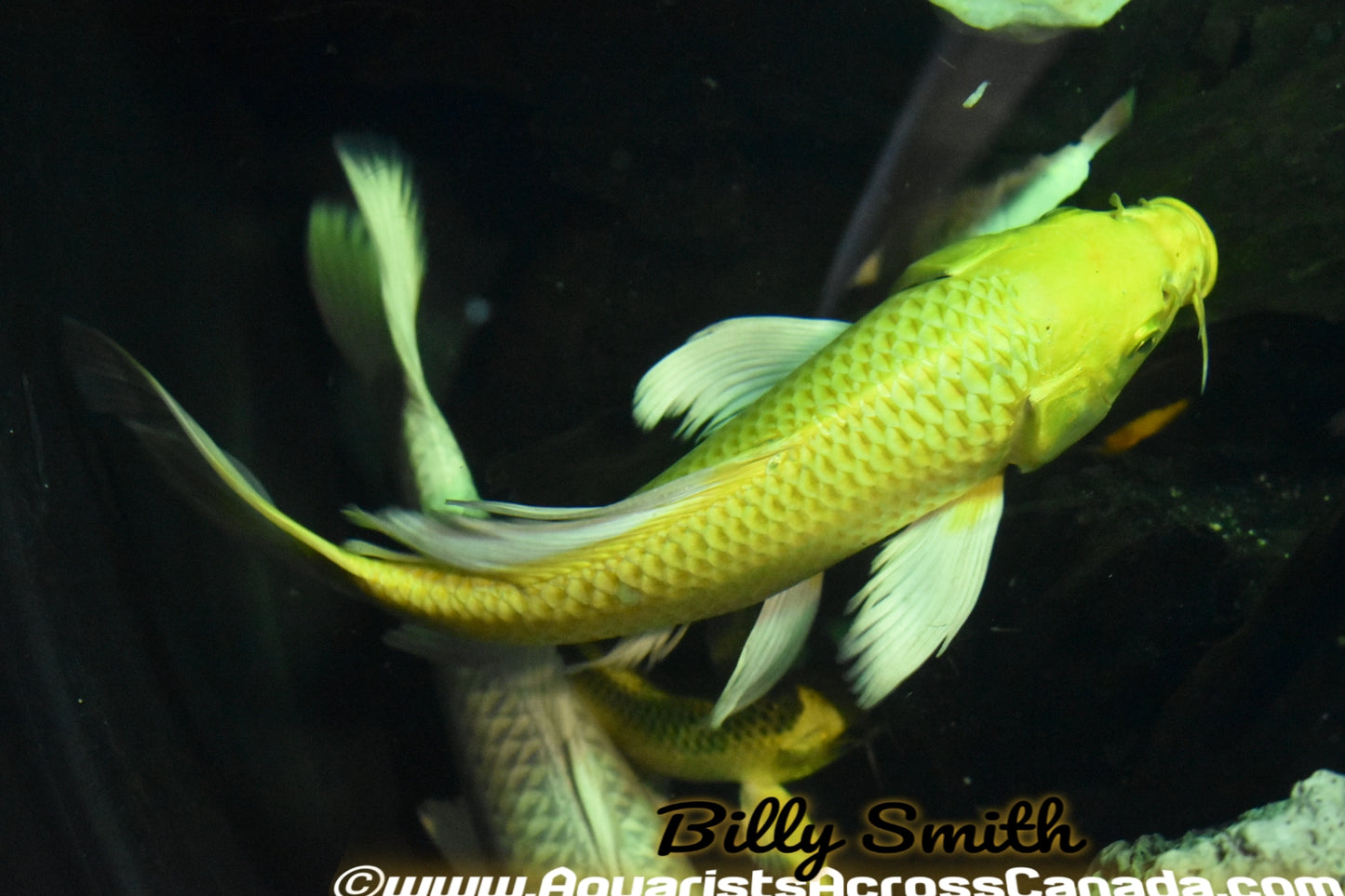SKU:KO2430S
KOI BUTTERFLY ASSORTED (Cyprinus Carpio) 2.5-3.75" A2404T
KOI BUTTERFLY ASSORTED (Cyprinus Carpio) 2.5-3.75" A2404T
Out of stock
Couldn't load pickup availability
Koi fish are a group of fish that originated from domesticated common carp (Cyprinus carpio). Common carp was known for their various colors many centuries ago in their natural habitat in Asia, most notably China. They were later selectively bred for color in Japan, hence the name koi fish (Japanese koi fish), as they are known today.
There are many different varieties of koi fish that vary in color, size, pattern, and type of scales. Simply put, koi fish are one of the most beautiful pond fish available. They have become so popular in the past century that they can now be found in ponds all across the world.
Koi fish can grow really, really big. The size they can grow to is determined by various factors, especially the environment they live in. If their habitat is well maintained, koi can grow quite large and also a lot healthier, living anywhere from 25 to 30 years. Exceptional koi can live for well over 100 years and the foundation on which everything else is built is a proper-sized pond.
The ideal pond size for keeping koi should hold at least 1,000-gallons of water. The very important thing when planning the size of your pond is the depth of water in it. Koi should be kept in at least 3-foot deep water to help your koi find cooler water in the summer and warmer water when it is cold. One thousand gallons of water should provide enough space for five koi fish, if all water parameters are correct.
One of the most important things to keep in mind is the bottom of your pond should not be covered with hard gravel or rocks. Most koi fish enthusiasts use a completely smooth bottom or fine gravel. This is practical because koi spend most of the time at the bottom of the pond when it is cold.
The deeper they rest during winter months, the warmer the water for them and when staying deep, they often make contact with the bottom surface. If the surface is too hard, it can injure their soft bellies, which can lead to a serious infection or even death.
https://www.theaquariumguide.com/articles/koi-fish-care
Share


